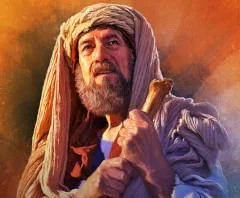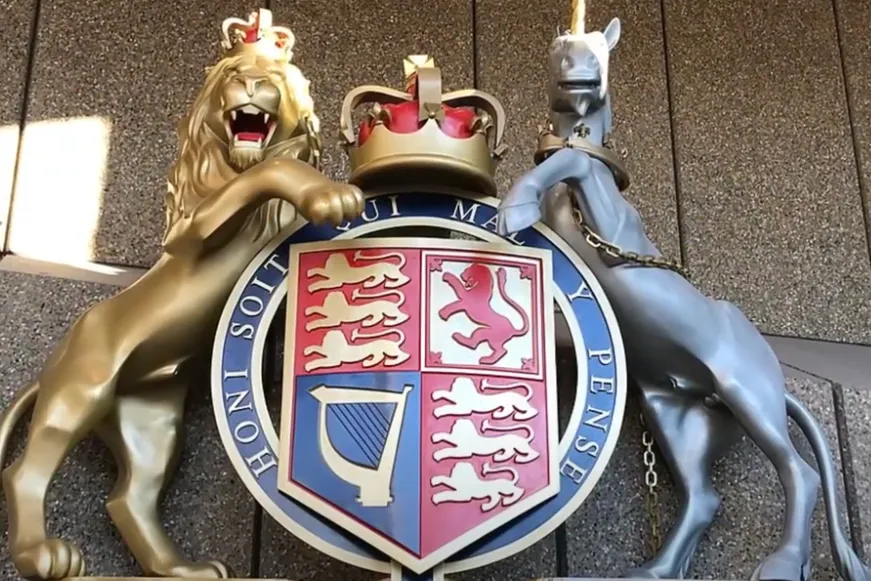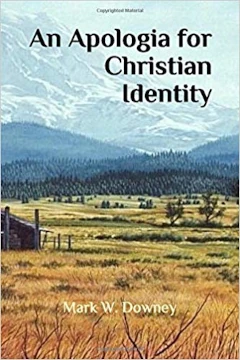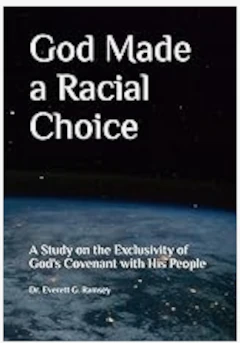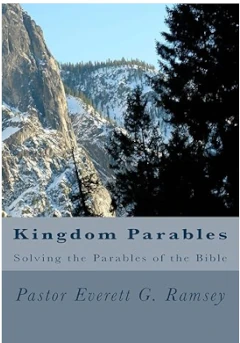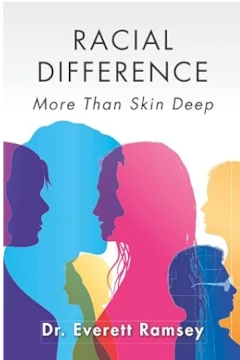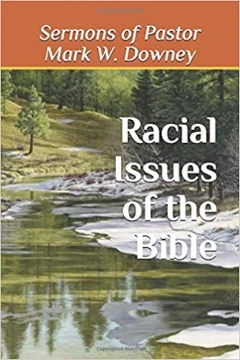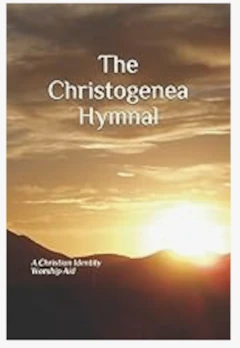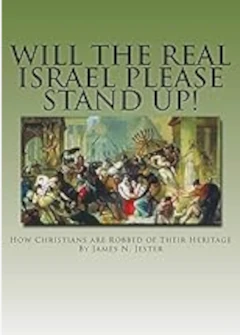The Temple - Part 1
by Walter Giddings
February 26, 2023
Scripture: Exodus 25:8
Greetings kindred and fellow sheep. We are on a first name basis here. My name is Walter. I am your classmate in God’s Classroom. The Holy Spirit whose name is Jesus Christ is our Teacher. Our Saviour prophesied the Destruction of the Temple:
Matthew 24:1-2
p And Jesus went out and depart-
ed from the temple: and his dis-
ciples came to him for to shew him
the buildings of the temple.
c 2 And Jesus said unto them, See
ye not all these things? Verily I
say unto you, There shall not be
left here one stone upon another,
that shall not be thrown down.
Matthew chapter twenty four.
What was the fulfillment of this Prophecy? Within the years named Anno Domini (Latin for the year of our LORD), do we have a temple in Jerusalem? (Mark 13:2). What happened to the Temple after Jesus ascended?
2 And Jesus answering said unto
him, Seest thou these great build-
ings? There shall not be left one
stone upon another that shall not be
thrown down.
Mark chapter thirteen.
When was the Temple destroyed? (Luke 21:6). Was there really no stone left on top of another?
6 As for these things which ye be-
hold, the days will come in the which
there shall not be left one stone upon
another, that shall not be thrown down.
Luke chapter twenty one.
“There shall not be left one stone upon another.” When was this destruction of the Temple? Was this prophecy fulfilled to the letter? (Acts 28:30-31). The Book of Acts ends before the destruction of the Temple and Jerusalem, in the reign of the Emperor Nero.
p 30 And Paul dwelt two whole years
in his own hired house, and received
all that came in unto him,
c 31 Preaching the kingdom of God,
and teaching those things which con-
cern the Lord Jesus Christ, with all
confidence, no man forbidding him.
Acts chapter twenty eight.
The Acts of the Holy Spirit through the Apostles and Disciples ends with the 2 years of Paul’s preaching and teaching to those seeking him in his rental house. The Martyrdom of both Peter and Paul goes unmentioned. Only The General Epistle of James, like unto Acts, ends without Benediction or Amen. Acts bears the appearance of being left incomplete for Heaven to fill in the record of the faithful who were not witness with firsthand knowledge of Christ’s Resurrection.
Where then do we have assurance that Christ’s Prophecy is fulfilled? Certainly Christ could never prophesy a prophecy that goes without eventual fulfillment! The wailing wall cannot be remnant Temple because some stones are left upon other stones. Herod’s Temple, Jesus honored, and whose destruction he prophesied! An account of the Temple Destruction is covered in The Complete Works of (Flavius) Josephus. The Arabian regiment of the Roman Legions, destroying Jerusalem, frustrated The Roman General Titus’ efforts to preserve the Temple. Until even now, the World honors Josephus as a credible historian.
What did the Existence of The Temple of Israel’s God signify? What does its Destruction signify?
Shall we take the first Question? What did the Temple of God on earth signify? (Hebrews 9:1). Did our God ordain a worldly sanctuary?
Then verily the first covenant had
also ordinances of divine service,
and a worldly sanctuary.
Hebrews chapter nine.
(Hebrews 8:5). The composer of Hebrews, writing of “every high priest” ordained to the service of God, says:
5 Who serve unto the example and
shadow of heavenly things, as Moses
was admonished of God when he
was about to make the tabernacle:
for, See, saith he, that thou make all
things according to the pattern shew-
ed to thee in the mount.
Hebrews chapter eight.
“Shadow of heavenly things”: Was every tabernacle and temple patterned after what already existed in Heaven? Did the Temple, built under Solomon, and the Temple, built under King Herod, have the precise pattern of the two cloth huts in The Tabernacle of Witness in the Wilderness? (Mark Hebrews 9:2-6). [stand].
c 2 For there was a tabernacle made;
the first, wherein was the candlestick,
and the table, and the shewbread;
which is called the sanctuary.
“Sanctuary” is translated from G39 hagion, hag’-ee-on, neuter of G40; [hagios, hag’-ee-os:- holy, saint] a sacred thing (that is, spot):- holy place, sanctuary.
p 3 And after the second veil, the taber-
nacle which is called the holiest of all.
“Holiest” is translated from G39 hagion repeated!! That transposes as Holy of Holies!
c 4 Which had the golden censer, and
the ark of the covenant overlaid round
about with gold, wherein was the
golden pot that had manna, and Aaron’s
rod that budded, and the tables of the
covenant.
p 5 And over it the cherubims of glory
shadowing the mercy seat; of which we
cannot now speak of particularly.
c 6 Now when these things were thus or-
dained, the priests went always into the
first tabernacle, accomplishing the ser-
vice of God.
Hebrews chapter nine.
“Tabernacle.” Look at Verses 2,3, and 6. “Tabernacle” translates G4633 skene, skay-nay’; a tent or cloth hut (lit. or fig.):- habitation, tabernacle. Print indelibly into our minds the 1st translation “habitation”! We shall need to recall that later.
(Hebrews 9:7). What did the existence of the Temple signify?
u 7 But into the second went the high
priest alone once every year, not with-
out blood, which he offered for him-
self, and for the errors of the people:
On the Day of Atonement the High Priest alone entered the 2nd cloth hut, or tabernacle, with every ordained Protection including blood sacrifice for his own sins!
What does that tell us? In Verse 7 what is the Holy Spirit signifying to us?
Was it a fearful annual event for the High Priest to enter into “The Holy of Holies? Some commentators have said he had a rope of sufficient strength tied to one ankle to drag his body from under the Veil if he should commit mortal error and fall into the hands of the Living God! Many students of The Scriptures will recall that the 2 eldest sons of the 1st High Priest Aaron, Nadab and Abihu, “offered strange fire before the LORD, which he commanded them not.” Fire from the LORD devoured them and they died! (Leviticus 10:9-11). The LORD spoke directly to Israel’s 1st High Priest Aaron:
c 9 Do not drink wine nor strong drink,
thou, nor thy sons with thee, when ye
go into the tabernacle of the congrega-
tion, lest ye die: it shall be a statute
forever throughout your generations:
p 10 And that ye may put difference be-
tween holy and unholy, and between
unclean and clean;
c 11 And that ye may teach the children
of Israel all the statutes which the LORD
hath spoken unto them by the hand of
Moses.
Leviticus chapter ten.
Does the consumption of alcohol have the potential to dull our minds, and affect our cognitive capacities to “put difference between holy and unholy, and between unclean and clean,” and to “teach the children of Israel all the statutes which the LORD hath spoken unto them by the hand of Moses”?
(Hebrews 9:8). What did the greatest care, not to approach the God of our Fathers unworthily, signify?
8 The Holy Ghost this signifying,
that the way into the holiest of all
was not yet made manifest, while as
the first tabernacle was yet standing.
Toward what purpose did the first tabernacle stand?
9 Which was a figure for the time
then present, in which were offered
both gifts and sacrifices, that could
not make him that did the service per-
fect, as pertaining to the conscience,
How long was this first tabernacle supposed to stand under incompletion?
10 Which stood only in meats and
drinks, and diverse washings, and
and carnal ordinances, imposed on
them until the time of reformation.
What time? What reformation?
11 But Christ being come an high
priest of good things to come, by a
greater and more perfect tabernacle,
not made with hands, that is to say,
not of this building;
Was “the time of reformation” the 1st Coming of Jesus Christ? What else did Jesus reform?
12 Neither by the blood of goats and
calves, but by his own blood he enter-
ed in, once into the holy place, having
obtained eternal redemption for us.
How powerful and effective was Christ’s own shed blood?
p 13 For if the blood of bulls and of goats,
and the ashes of an heifer sprinkling the
unclean, sanctifieth to the purifying of
the flesh:
c 14 How much more shall the blood of
Christ, who through the eternal spirit of-
fered himself without spot to God, purge
your conscience from dead works to serve
the living God?
Hebrews chapter nine.
If the 1st Tabernacle was pitched according to the pattern of the heavenly, what did that pattern picture? (Mark Exodus 25:8-9). What did the LORD speak unto Moses?
p 8 And let them make me a sanctuary
that I may dwell among them.
c 9 According to all that I shew thee,
after the pattern of the tabernacle, and
the pattern of all the instruments there-
of, even so shall ye make it.
Exodus chapter twenty five.
“Make me a sanctuary that I may dwell among them.” Would our Heavenly Father feel like His Children Israel were extending gracious hospitality unto Him by erecting an earthly replica of his Throne Room in heaven? (Hebrews 10:24-25). Are we any interested in extending more Gracious Hospitality unto The Holy Spirit in our weekly assemblies?
p 24 And let us consider one another
to provoke unto love and to good
works.
c 25 Not forsaking the assembling of
ourselves together, as the manner of
some is; but exhorting one another:
and so much the more, as ye see the
day approaching.
Hebrews chapter ten.
“Let us consider one another.” The Greek word translated “consider”, G2657 kata-noeo is a compound word consisting of G2596 kata, kat-ah’; a primary particle (preposition) down (in place or time), in varied relations (according to the case, genitive, dative, accusative, with which it is joined):- [in this case “exceeding”] and G3539 noieo, noy-eh’-o; from G3563; to exercise the mind (observe), that is, figuratively to comprehend, heed:- 3 other translations of the Koine Greek Text, perceive, think, understand. Putting kata and noieo together as katanoeo it has the sense of consider exceedingly. In other words the Scripture counsels us to consider a brother so deeply we see him completely, both his seeds and his weeds. And we hold each other accountable. (Verse 25). Can we do that for each other if we forsake “the assembling of ourselves together as the manner of some is”?
(Back to Exodus 25). To understand how we can the more “exceedingly” welcome The Holy Spirit into our weekly assemblies, shall we take one example in the pattern of “The Holies,” described, in Hebrews 9, as the 1st and 2nd tabernacles. We shall be in the 1st, or The Holy Place, before the Veil that covers The Holy of Holies, wherein The Mercy Seat rests on top of The Ark of God with the 2 Cherubims with outstretched wings overshadowing. In the 1st tabernacle or The Holy Place, on the north side is The Incense Altar where Zacharias of the course of Abia [Abijah, the 8th course]burned incense before the Holy of Holies and was visited by the Angel Gabriel.
(Exodus 25:30-33). At the southward of the 1st was the Table of the Shewbread and there was made an item also “after their pattern” which God showed Moses in the mount.
p 30 And thou shalt set upon the table
shewbread before me alway.
c 31 And thou shalt make a candlestick
of pure gold: of beaten work shall
the candlestick be made; his shaft and
his branches, his bowls, his knops,
and his flowers shall be of the same.
May I trust that you recall this Candlestick was mentioned in verse 2 of Hebrews chapter 9, wherein the 1st tabernacle was called “the sanctuary”?
p 32 And six branches shall come out
of it: three branches of the candle-
stick out of the one side; and three
branches of the candlestick out of
the other side;
c 33 Three bowls made like unto al-
monds with a knop and a flower in
one branch; and three bowls made
like almonds in the other branch,
with a knop and a flower: so in the
six branches that come out of the can-
dlestick.
(Look back to verse 32). Classmates, how many sides does the candlestick have? What does the verse say? “The one side” and “the other side”. Can someone tell me what is between the 2 sides? Hang in with me here. I know how difficult this part is! I have had trouble with this picture for years. In struggling to understand this picture, this pattern that The Great I Am God of Israel gave to Moses, I received an unexpected Reward that increased my understanding exponentially. Who can tell me what is in between the 2 sides of 3 branches each? [Verse 31: the list of the candlestick parts]!
“The shaft”. This is a pattern; this is a picture. What does the Shaft represent?
(Verse 33). Which 2 words are underlined? “Almonds.” What kind of Tree is pictured here?
In order for the priests like Zacharias to enter into the Sanctuary to burn incense on the incense altar, they must move in which direction? There are 4 cardinal directions in the Hebrew reckoning: east, west, north and south. In which direction did Zacharias move to enter into the Sanctuary? On which side, east, west, north or south are the veils hung before the 2 tabernacles? For Zacharias to move through the veil into the Sanctuary he would have to be headed _______?
In Jesus’ Day, when the magnificent Temple still stood, due east of the Temple Veil stood what? What was east of the Temple in full view of the Veil?
What does a Mount called Olives suggest to us is nearby? Was the olive oil concession of the Garden of Gethsemane [oil press] owned by the family of Martha, Mary, and Lazarus? Were there also Almond Trees in the Garden of Gethsemane?
(Exodus 25:34-36):
c 34 And in the candlestick shall be
four bowls made like unto almonds,
with their knops and their flowers.
p 35 And there shall be a knop under
two branches of the same, and a knop
under two branches of the same, and
a knop under two branches of the same,
according to the six branches that pro-
ceed out of the candlestick.
c 36 Their knops and their branches shall
be of the same: all it shall be one beat-
en work of pure gold.
Are the six branches divided into pairs, each pair having a knop? What is this pattern supposed to picture? Under what tree did Jesus sweat as it were drops of blood in earnest prayer before his arrest in the Garden of Gethsemane?
Across the Kidron Valley, due east of the Temple, in full view of the Veil of the Temple was the location that had 2 names with deep meaning. Calvary/Golgotha was in full view of the Father who watched His Son suffer and perish for our sakes. In our Lesson on Jesus’ Death we confirmed from the Scriptures our Saviour was nailed (crucified) to the beam he and Simon of Cyrene carried. Then they hanged Jesus and he two thieves on that Tree at Calvary. Did the Garden of Gethsemane have 2 kinds of trees: olive trees and almond trees? Do the six branches on the candlestick (Heb. menorah, men-o-raw’) represent 3 pairs of upraised arms on the almond tree?
(Exodus 25:37-40):
p 37 And thou shalt make the seven
lamps thereof: and they shall light
the lamps thereof that they may give
light over against it.
c 38 And the tongs thereof, and the
snuffdishes thereof, shall be of pure
gold.
p 39 Of a talent of pure gold shall he
make it, with all these vessels.
c 40 And look that thou make them
after their pattern, which was shew-
ed thee in the mount.
Exodus chapter twenty five.
This ends Exodus chapter 25. Look again at Verse 37. “The seven lamps”: “they shall light the lamps thereof ..” What do the 7 lamps lit represent? “… that they may give light over against it.” Does that mean the Candlestick [Heb. menorah] is the light of the Sanctuary southward, lighting the incense altar northward?
Do we study The Bible according to The Laws of Bible Study? Do we use God’s Library according to the Rules of that Library? What is The Law of Hermeneutics? Is Jesus the very personification of Harmony? Is He the Living Word? “Jesus Christ the same yesterday, and today, and for ever.” Hebrews 13:8.
(John 8:12):
12 Then spake Jesus again unto them,
saying, I am the light of the world: he
that followeth me shall not walk in
darkness, but shall have the light of
life.
John chapter eight.
“The light of life”. Is Jesus speaking of Resurrection life? Eternal life? In John 14: 6, does Jesus still equate “the life” unto Himself? “I am the way, the truth, and the life; no man cometh unto the Father, but by me.” (John 9:5).
5 As long as I am in the world, I am
the light of the world.
John chapter nine.
I am out of time. Your homework is (John 1:5,9).
Was “the light of the world” crucified to that beam, and hanged upon that Almond Tree at Calvary? Is the Record of the Candlestick in the Sanctuary a Record of Fulfilled Prophecy?
All the Temples have gone the Way of Destruction! Solomon’s Temple was, in the Babylonian Siege of the House of Judah, and all of Jerusalem, destroyed with the City. The Restored Temple of the Return from the Babylonian Captivity was destroyed after successive waves of world armies tried to take an ancient hill of rulership called Zion! A king named Herod, who massacred the children of Bethlehem from 2 years and under, had ingratiated himself by building a Magnificent Temple at the same time he destroyed the Israel genealogical records so no one could see his descent was not listed. (The Obama Birth Certificate and other lies of governments are “nothing new under the Sun”.) Though Titus the Roman General ordered the Temple to be secured, the Arabian Legion in A.D. 70 left not one stone upon another in fulfillment of Christ’s Word!
(Hebrews 9:8). Does every destruction of The Temple remind us of a Scripture we already studied in this Lesson?
8 The Holy Ghost this signifying,
that the way into the holiest of all
was not yet made manifest. while as
the first tabernacle was yet standing.
Hebrews chapter nine.
Is it “manifest” or evident that “the first tabernacle” is not “standing”?! To be continued, God willing, on the next occasion. Is there no New Testament Temple?
Bibliography
Matthew 24:1-2. “thrown down.”
Mark 13:2. “be thrown down.”
Luke 21:6. “not be left one stone upon another.”
Acts 28:30-31. “preaching the kingdom of God.”
Hebrews 9:1. “a worldly sanctuary.”
Hebrews 8:5. “the pattern.”
Hebrews 9:2. [stand] “the sanctuary.”
Hebrews 9:3. “the holy of holies.”
Hebrews 9:4-6. “the priests went always into the first tabernacle.”
Hebrews 9:7. “not without blood.”
Leviticus 10:9-11. “a statute forever.”
Hebrews 9:8. “the way.”
Hebrews 9:9. “a figure for the time then present.”
Hebrews 9:10. “until the time of reformation.”
Hebrews 9:11. “not of this building.”
Hebrews 9:12-14. “to serve the living God.”
Exodus 25:8-9. “make me a sanctuary.” [p 8].
Hebrews 10:24-25. “let us consider one another.”
Exodus 25:30-33. “the candlestick.”
Exodus 25:34-36. “like unto almonds.”
Exodus 25:37-40. “give light.”
John 8:12; 9:5. “the light of the world.”
Hebrews 9:8 revisited. “the first tabernacle was yet standing.”

